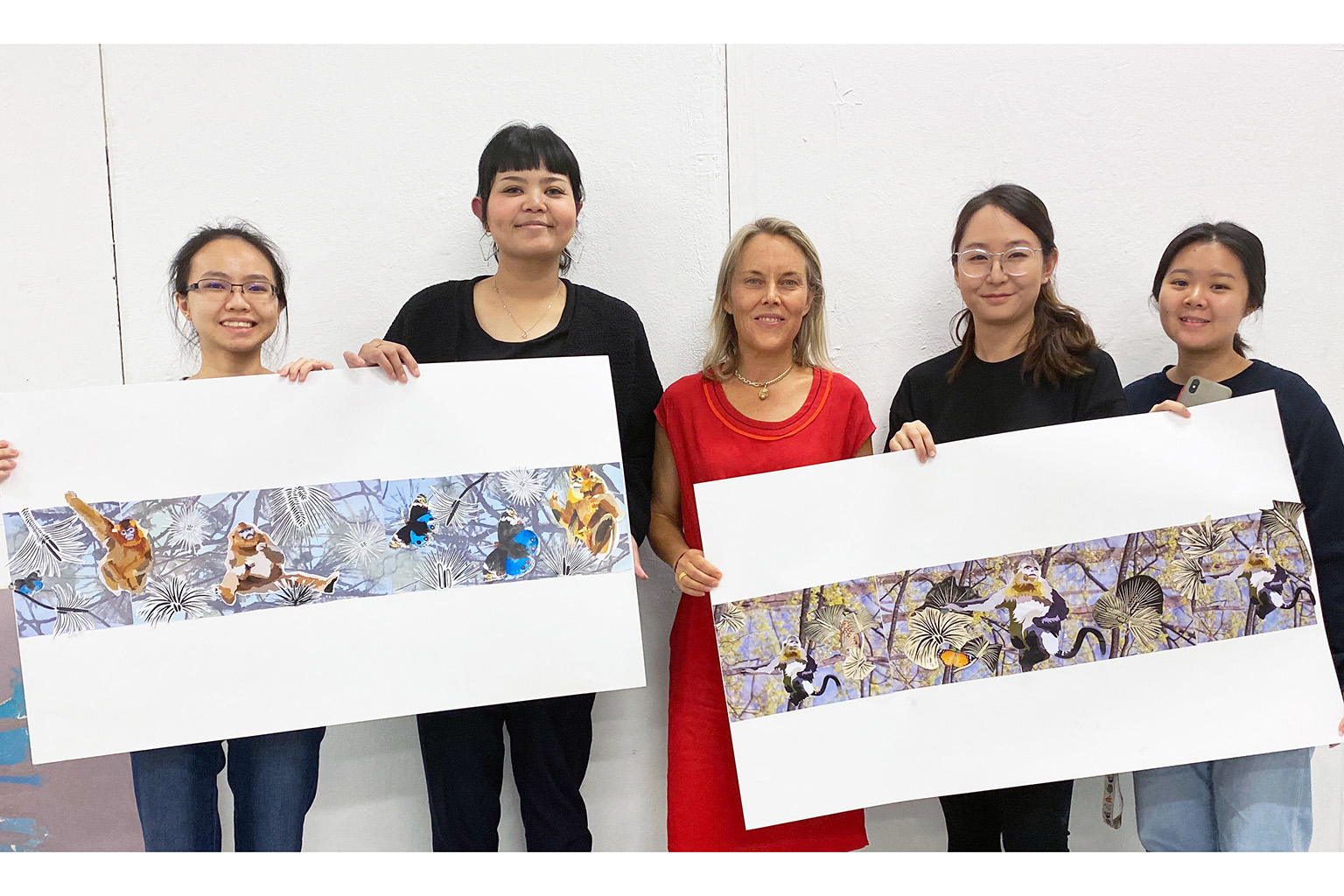Golden Monkey coming to Bras Basah
An Australian artist's conservation-themed installation seen around the world will be found on former Manulife Centre next year
Sign up now: Get ST's newsletters delivered to your inbox

Drawing inspiration from Yunnan's pine forests, Australian artist Lisa Roet (centre) and Lasalle College of the Arts students (from left) Tricia Law, Siti Nursyarafina, Eugene Lee and Priscilla Chan designed a hoarding to go around the now renamed 5One Central building as it undergoes renovation before it is unveiled next year with the artist's Golden Monkey installation on its facade.
PHOTO: ART PARTNERS
Follow topic:
Not to be confused with King Kong, an installation of a giant monkey perched on the side of a building will be unveiled here next year, to spread awareness about wildlife conservation.
The dazzling public art installation created by Australian artist Lisa Roet will be unveiled on the former Manulife Centre, now renamed 5One Central, in Bras Basah Road in the second half of next year.
Inspired by the endangered snub-nosed monkey inhabiting the cool mountain forests of Yunnan, China, the inflatable sculpture, which has been similarly executed in Beijing, Hong Kong and Melbourne, will be Roet's first in South-east Asia.
Marrying conservation and art, the 53-year-old says deforestation and the extinction of species are two issues she wants to bring to the fore through the work.
Says Roet: "I want to raise awareness of the plight of forests and the ecosystem, but I want to make it beautiful so that people appreciate it and so that they enjoy it, without depicting a bleak picture."
She adds that she wanted to recreate the snub-nosed monkey and pay tribute to the animal's home.
"These dense forests are a natural wonder of the world and have such a diverse ecosystem. I decided to recreate that newly discovered species, but also present the artwork as a symbol of some of the issues plaguing these vast forests," she says.
Roet originally wanted to be an anthropologist or zoologist, but later focused on art and has been active for about 30 years in the field of environmental art, which refers to practices including the use of natural materials or creating art work that draws attention to conservation.
"As I visited Borneo and other places, I saw the degradation of the forests before my very eyes and it was quite shocking. Although it was not my intention when I first started, these themes slowly crept into my work," she says.
She describes the installation, called the Golden Monkey, as a way for corporations and art to come together in conservation.
The artist was approached by property fund managers Chelsfield Asia and ARA Asset Management, which had jointly acquired the building, to work on the project last year.

Behind the work lies a meticulous creative process that aims to minimise carbon footprint and ensure sustainability.
Roet performs a carbon offset analysis and studies the carbon footprint accumulated in the execution of the work, from its textiles to transport. She takes into consideration how biodegradable and durable the material is, and if it can be taken down and redistributed for other textile uses after the installation is removed.
She worked with four students from Lasalle College of the Arts to design hoarding around the building that draws inspiration from Yunnan's pine forests. The hoarding will remain in place until the unveiling of the Golden Monkey.
Former Lasalle student Eugene Lee, 30, who worked on the hoarding project with Roet, says team members worked together to flesh out in a short period of time a design inspired by the monkey's habitat.
She says her biggest takeaway from the experience was understanding that artists have a crucial role now more than ever in addressing important issues.
Says Ms Lee: "Artists can bridge the gap between scientists and the layman by informing the public through their work. As an aspiring artist, I want to emulate how Lisa managed to minimise waste and lower her carbon footprint."

